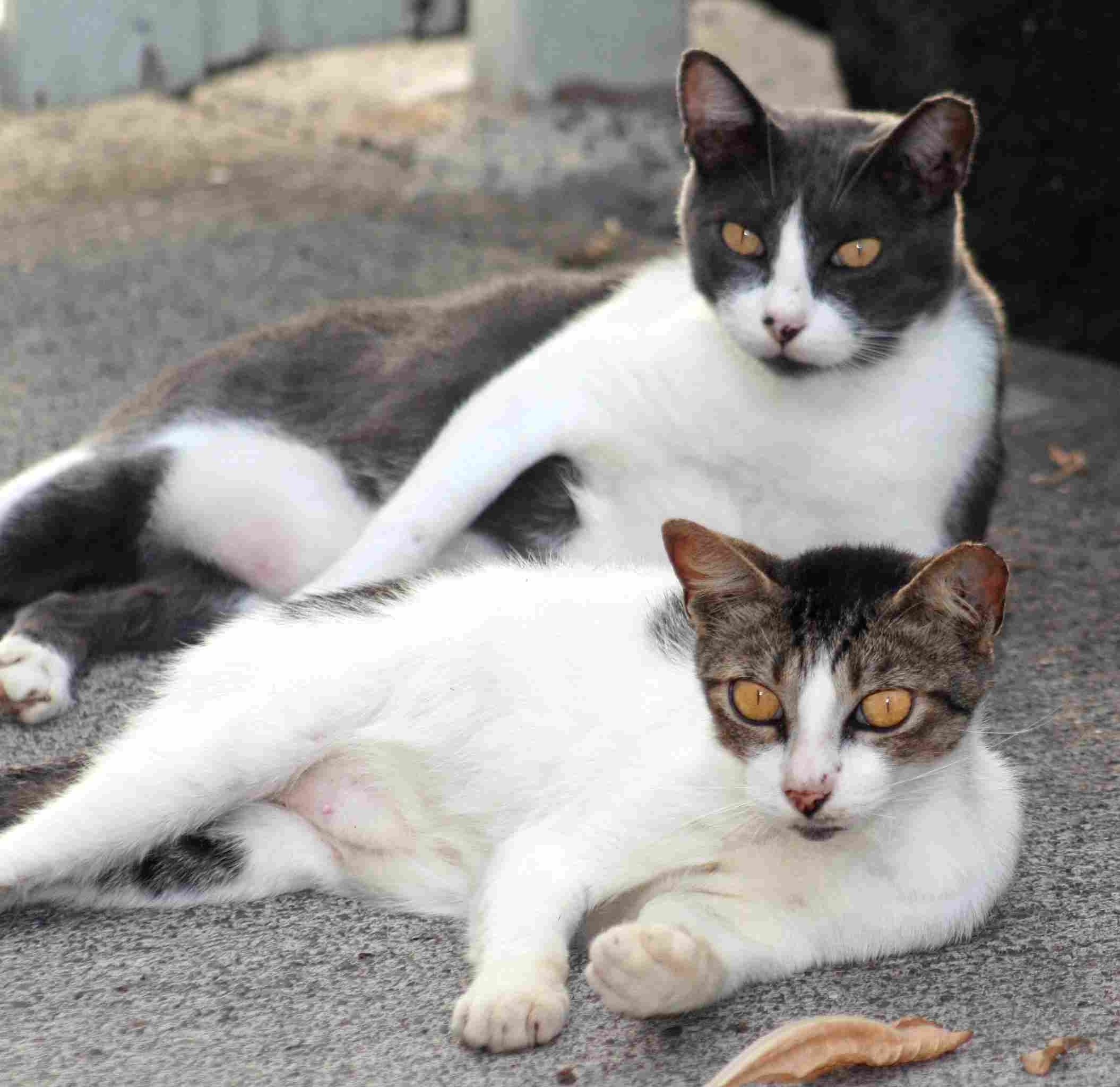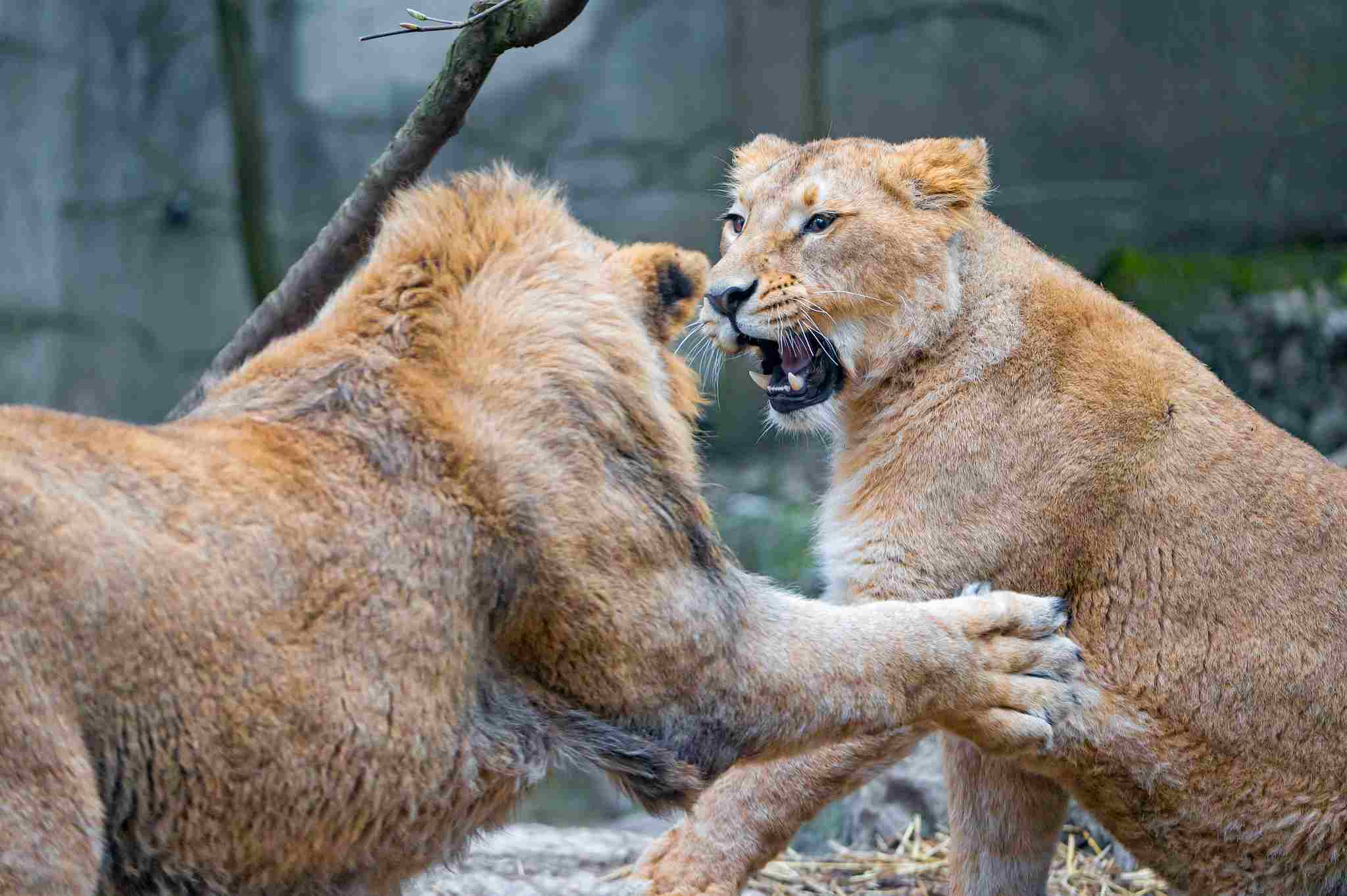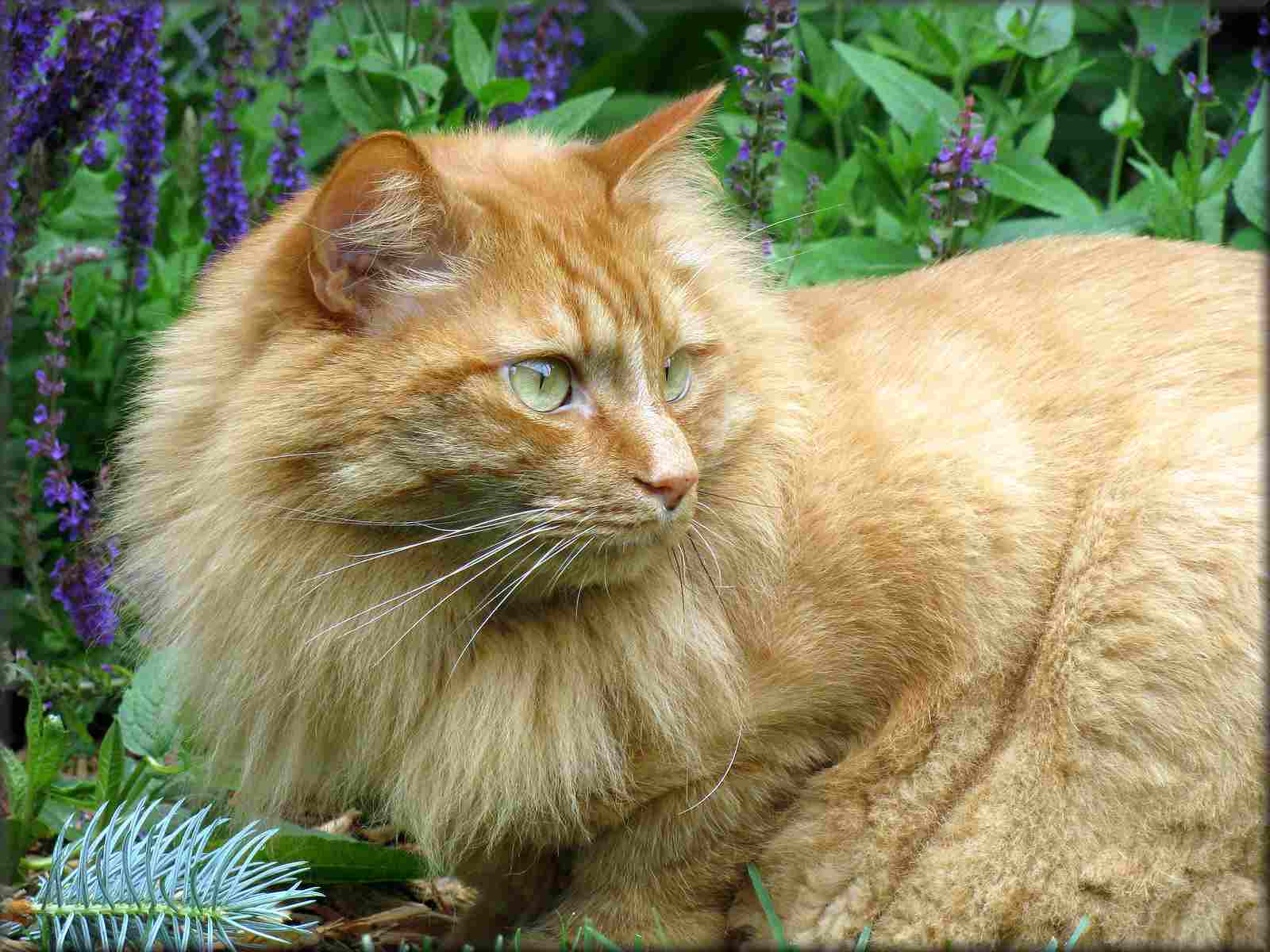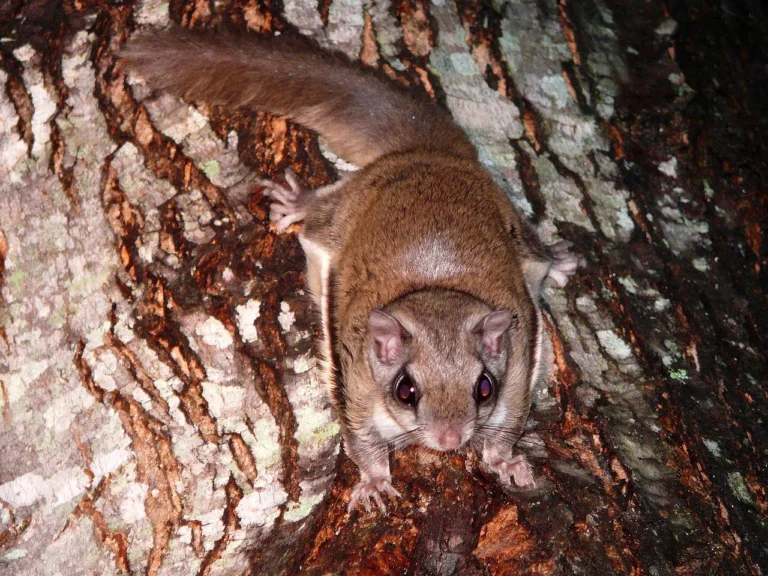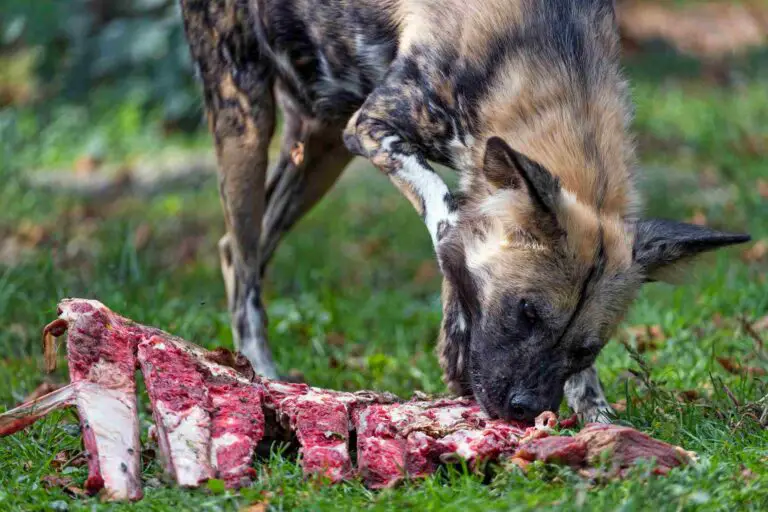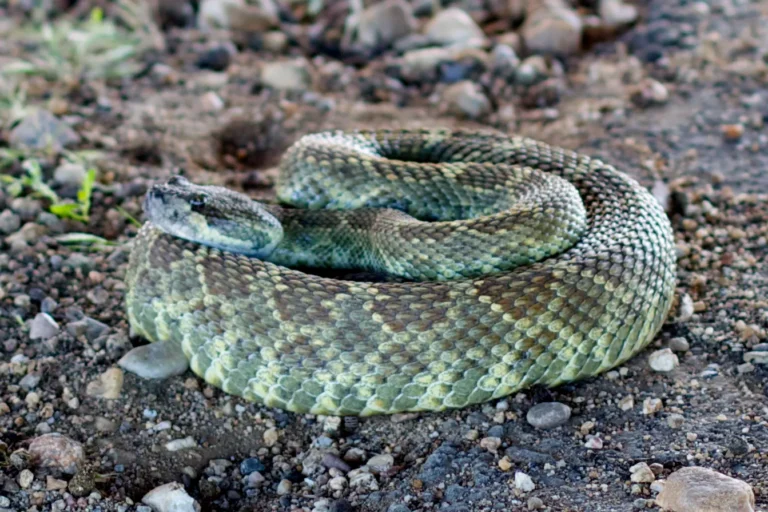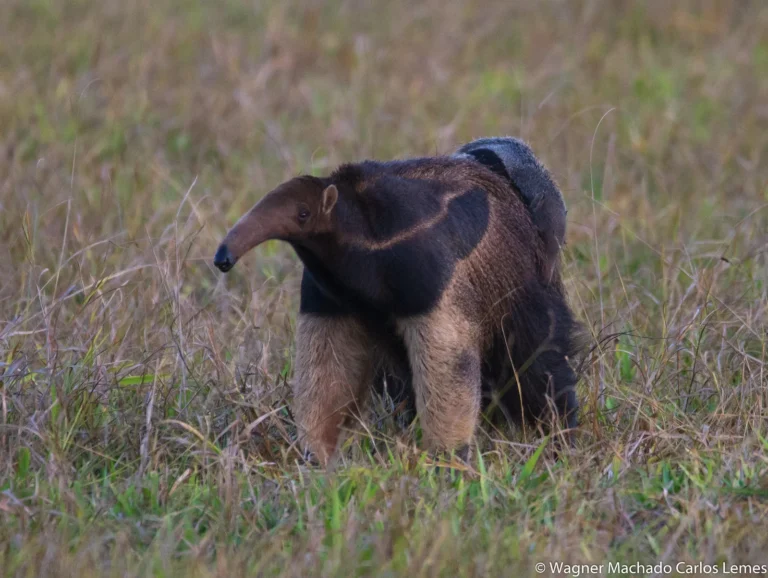Cat Vs Mountain Lion Size, Weight, Overall Comparison
Examining the dynamics between domestic cats and mountain lions reveals a closer taxonomic relationship within the feline family. While both belong to the family Felidae, the stark differences in size and physical attributes highlight the inherent advantages of a mountain lion in a hypothetical confrontation. In a fight, a mountain lion, being far larger, heavier, stronger, faster, and more agile, would likely emerge as the superior predator over any domestic cat species.
Cat vs Mountain Lion: Navigating Feline Dynamics
I. Taxonomic Closeness:
– Domestic cats and mountain lions share a close taxonomic relationship within the family Felidae, emphasizing their common ancestry as feline species.
II. Physical Disparities:
– Mountain lions, as apex predators, exhibit significant physical disparities compared to domestic cats. They are far larger, heavier, stronger, and possess superior agility and speed.
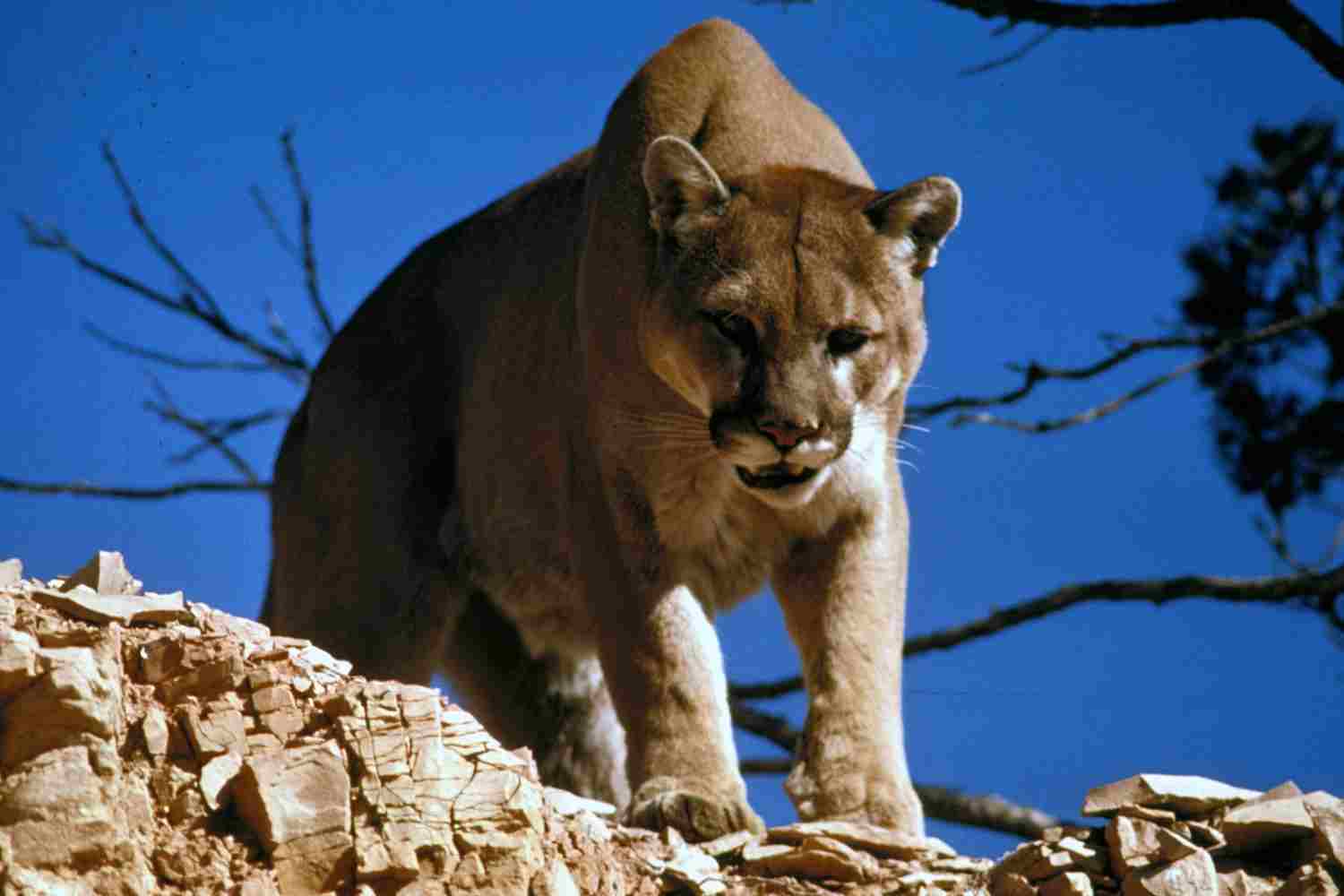
III. Size and Strength Advantage:
– In a hypothetical confrontation, the mountain lion’s size and strength advantage would likely result in it overpowering any domestic cat species. The sheer physical prowess of the mountain lion places it at a distinct advantage in predatory scenarios.
IV. Speed and Agility:
– Mountain lions are known for their exceptional speed and agility, which are critical traits for successful predation. In a fight, their ability to maneuver quickly would further contribute to their dominance over domestic cats.
V. Predatory Superiority:
– Mountain lions, as natural predators, are superior hunters with finely tuned predatory instincts. This predatory superiority, coupled with their physical advantages, positions them as formidable predators in the wild.
VI. Real-Life Considerations:
– Real-life confrontations between domestic cats and mountain lions are extremely rare due to their different habitats and living conditions. Responsible pet ownership includes ensuring the safety of domestic cats by minimizing exposure to potential threats.
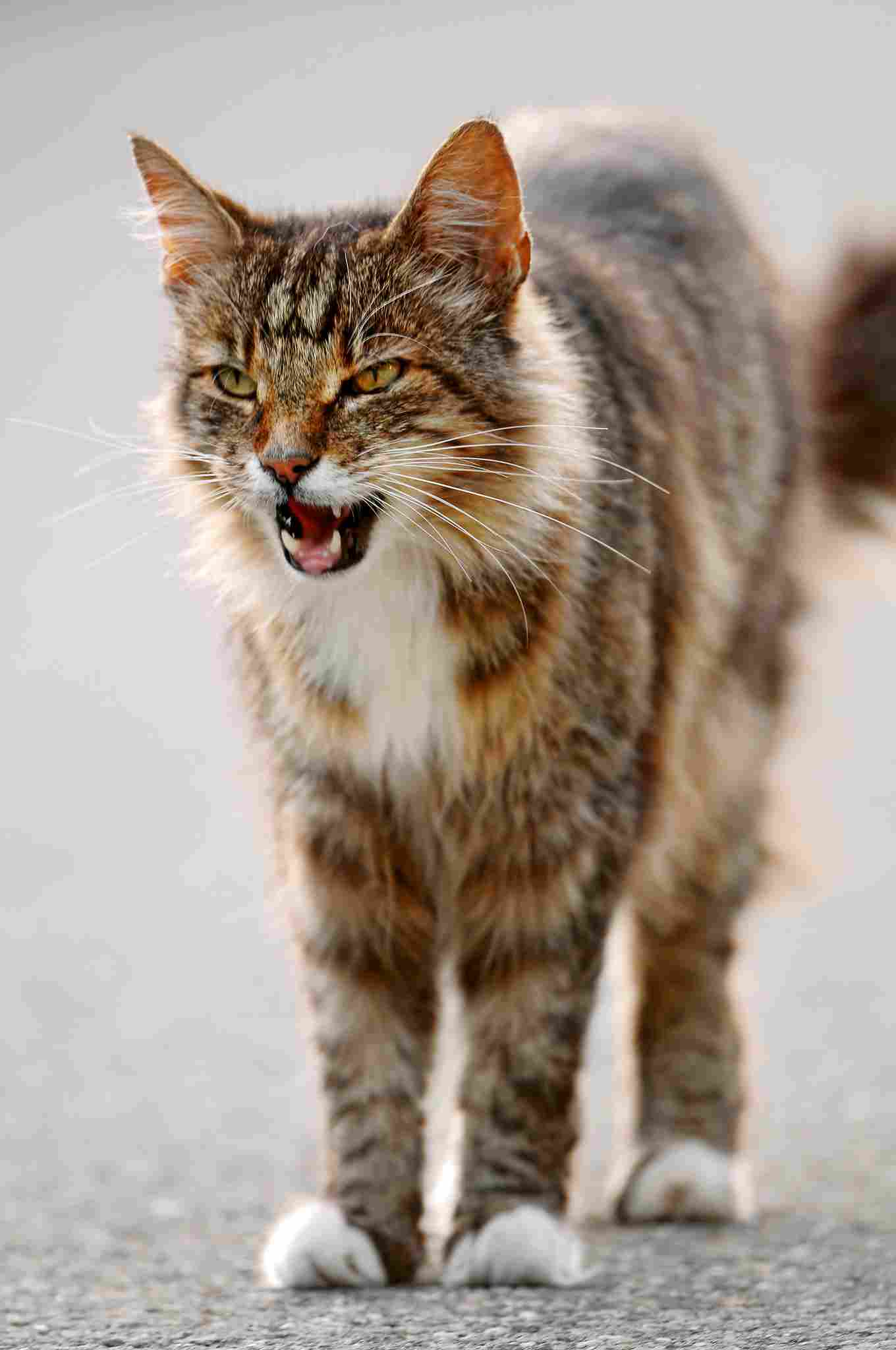
VII. Appreciating Wildlife Dynamics:
– Understanding the differences in size, behavior, and predatory capabilities between domestic cats and mountain lions contributes to an appreciation of wildlife dynamics. Responsible coexistence involves maintaining natural habitats and respecting the ecological roles of each species.
*Details of Comparison
| Criteria | Domestic Cat | Mountain Lion |
| Taxonomy | Felis catus (Felidae, Felis) |
Puma concolor (Felidae, Puma)
|
| Appearance | Diverse, variable size |
Tawny coat, larger, robust build
|
| Size | Up to 20 pounds |
80 to 220 pounds
|
| Weight | 5 to 20 pounds |
80 to 220 pounds
|
| Bite Force (PSI) | 200 to 300 PSI | 350 to 700 PSI |
| Physical Offensive Adv. | Sharp claws, quick reflexes |
Powerful jaw, sharp claws, enhanced strength
|
| Physical Defensive Adv. | Agility, climbing abilities |
Strong hind legs, solitary behavior
|
| Speed | Up to 30 mph | 40-50 mph |
| Agility | Agile with quick reflexes |
Agile in diverse terrains
|
| Senses | Excellent night vision, heightened hearing |
Superior night vision, acute sense of smell
|
| Overall Physical Capacity | Moderately adaptable |
Built for strength, speed, hunting
|
| Habitat Preference(s) | Urban, rural |
Varied habitats including forests, mountains
|
| Tracks | Smaller, retractable claws visible |
Larger, retractable claws without visible marks
|
| Lifespan | 12 to 15 years | 8 to 13 years |
| Mode of Feeding | Small prey, commercial cat food |
Larger prey like deer and elk
|
| Intelligence | Problem-solving skills |
Higher intelligence for hunting
|
| Social Behavior | Varied, can be solitary or form small groups |
Primarily solitary, except during mating
|
| Mode of Reproduction | Polyestrous, gestation around 63 days, 1-9 kittens |
Polyestrous, gestation 82-96 days, 2-3 cubs
|
| Parental Behavior | Maternal care, varying male involvement |
Extensive maternal care, female raises cubs independently
|
| Proximity to Human Areas | Close proximity to humans |
Generally avoids, but may encroach upon human territories
|
| Behavior Toward Humans | Varied, can be affectionate or aloof |
Typically avoids direct contact with humans
|
| Danger Posed to Humans | Minimal danger, defensive behaviors |
Potential danger, especially if threatened
|
| Associated Precautions | Basic pet care, vaccinations |
Awareness, avoiding confrontation, conservation measures
|
| Conservation Status | Not conservation-dependent |
Varied, localized conservation efforts may be required
|
Key Points
- Domestic cats are smaller, adaptable to urban and rural environments.
- Mountain lions are larger, with robust builds, adapted to diverse natural habitats.
- Mountain lions have superior physical capabilities, including bite force, speed, and hunting prowess.
- Differences in reproductive patterns and parental behavior highlight ecological roles.
- Mountain lions’ avoidance of humans necessitates conservation measures for coexistence.
- Conservation efforts for mountain lions vary regionally, depending on threats and local populations.
1. Taxonomy:
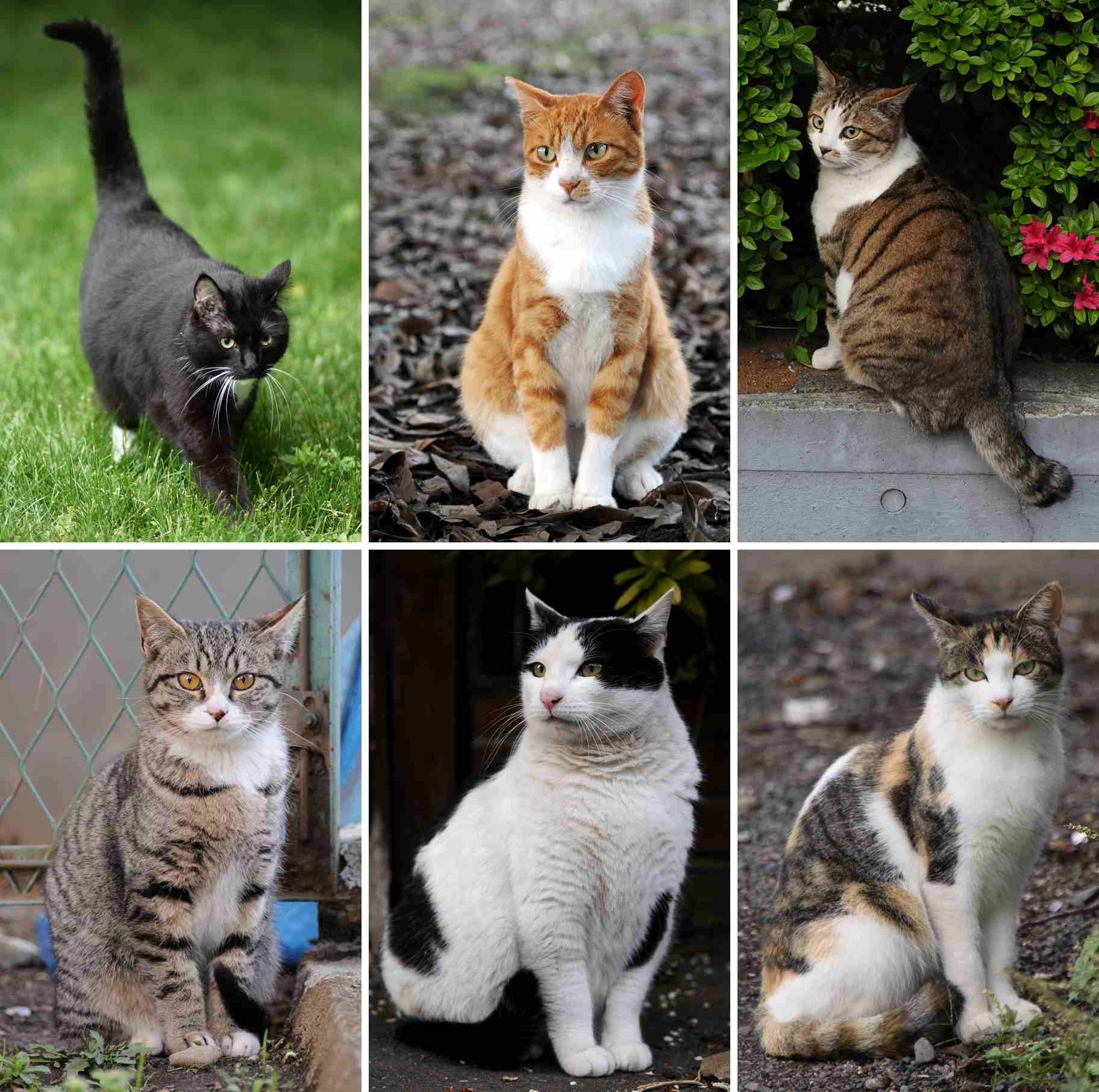
Cat:
Family: Felidae
Genus: Felis
Species: Felis catus (domestic cat)
Mountain Lion:
Family: Felidae
Genus: Puma
Species: Puma concolor
2. Appearance:
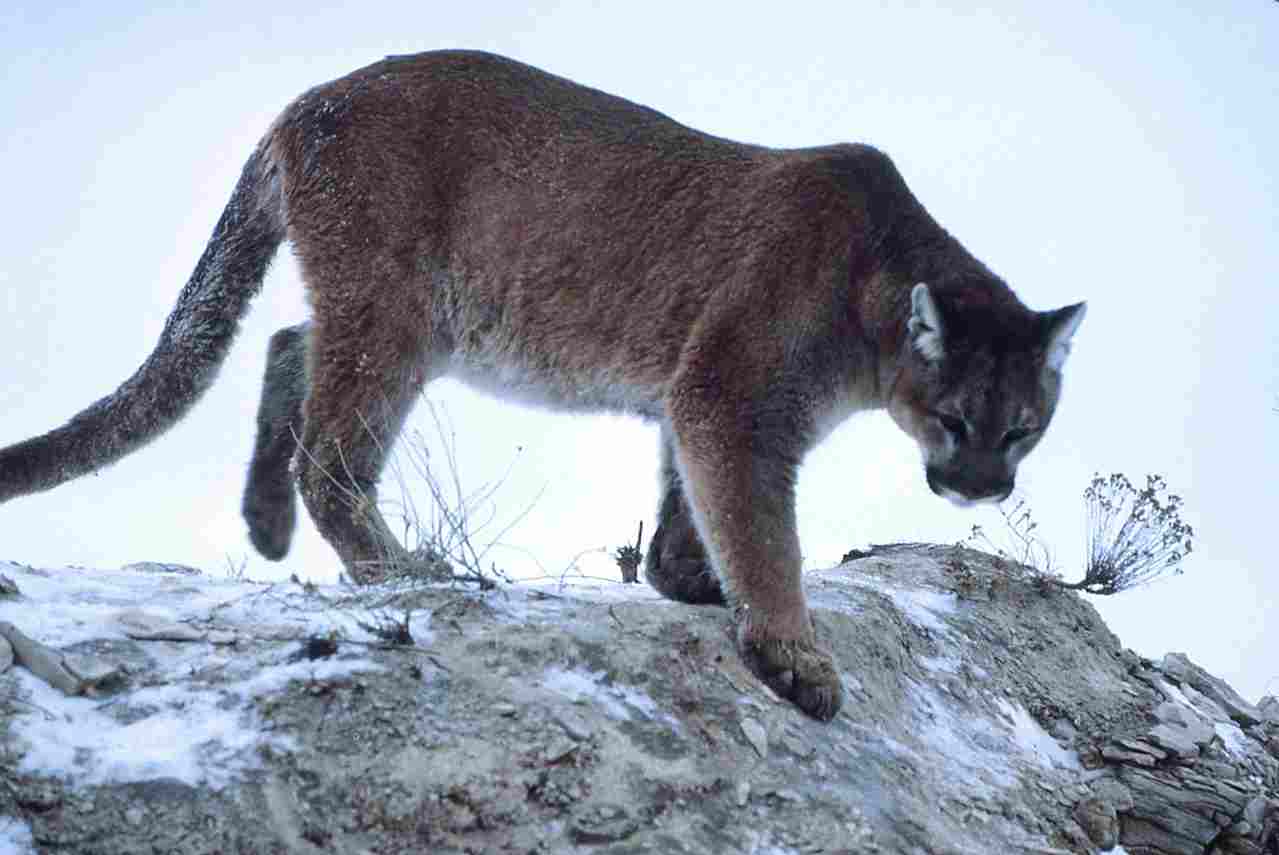
Cat:
Domestic cats have diverse coat colors and patterns.
Variable size, typically smaller, with a compact body and a range of tail lengths.
Mountain Lion:
Tawny coat, often with some variations, and a long tail.
Larger and more robust than domestic cats, with a muscular build.
Comparison: Mountain lions exhibit a more uniform appearance, emphasizing their adaptability to various environments, while domestic cats display a wider range of appearances, often influenced by selective breeding.
Ecological Implications: The mountain lion’s distinct appearance contributes to its camouflage in diverse habitats, enhancing its hunting capabilities. Domestic cats’ appearances vary based on human preferences, with minimal ecological implications beyond potential effects on local ecosystems due to feral populations.
3. Size:
Cat:
Varies in size; average length is around 18 inches (45 cm).
Height at shoulder: 8-10 inches (20-25 cm).
Mountain Lion:
Length ranges from 5.5 to 9 feet (1.7 to 2.7 meters), including the tail.
Height at shoulder: 24-35 inches (60-90 cm).
Comparison: Mountain lions significantly surpass domestic cats in size, displaying a robust physique adapted for hunting larger prey.
Ecological Implications: The larger size of mountain lions positions them as top predators in their ecosystems, influencing prey populations and contributing to overall biodiversity.
4. Weight:
Cat:
Typically weighs between 5 to 20 pounds (2.3 to 9 kg).
Mountain Lion:
Weighs between 80 to 220 pounds (36 to 100 kg).
Comparison: Mountain lions exhibit a substantially higher weight range compared to domestic cats, reflecting their role as apex predators in their respective habitats.
Ecological Implications: The weight of mountain lions plays a crucial role in maintaining ecological balance by controlling herbivore populations, which, in turn, affects vegetation dynamics.
5. Bite Force (PSI – Pounds per Square Inch):
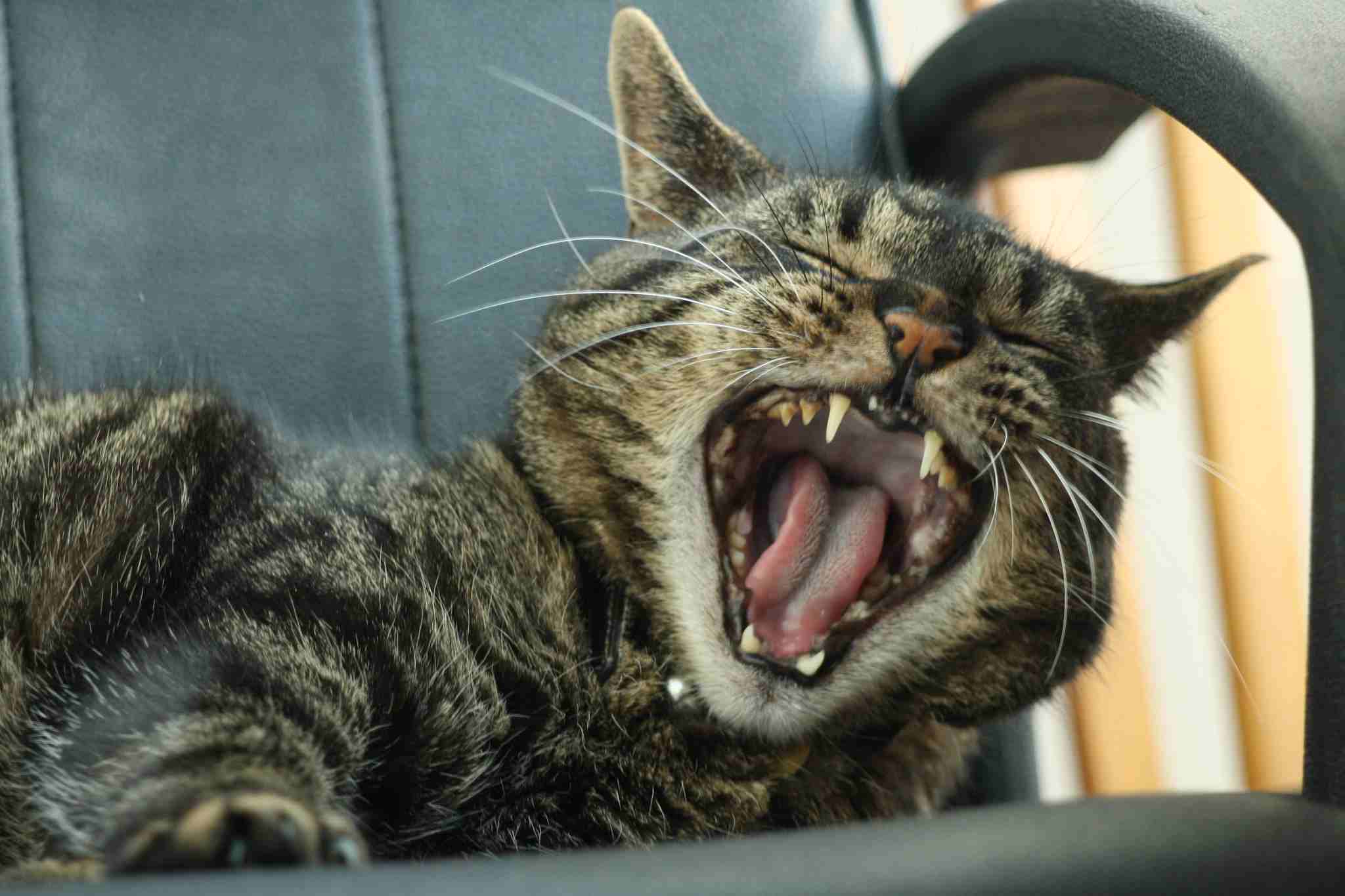
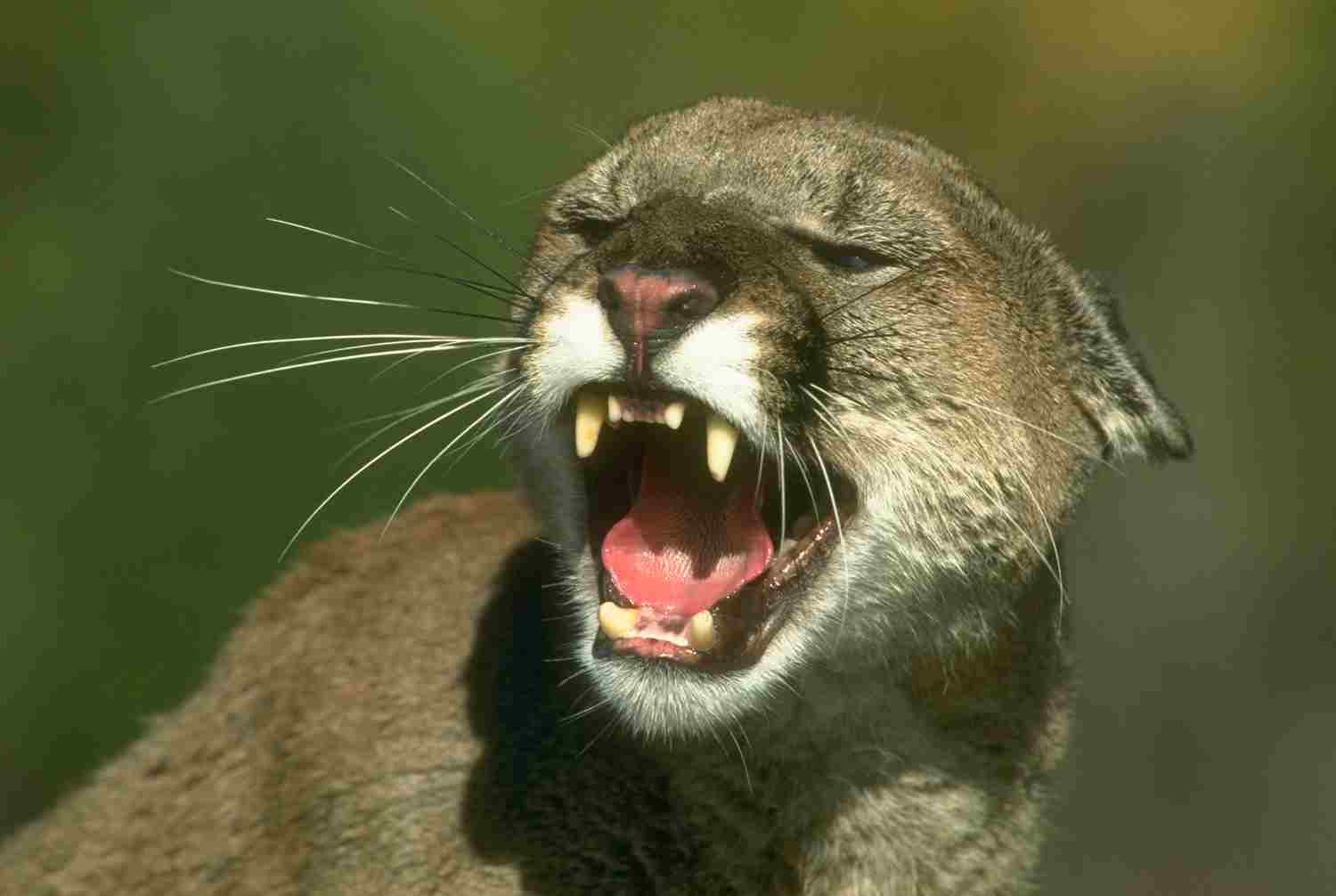
Cat:
Average bite force of around 200 to 300 PSI.
Mountain Lion:
Estimated bite force ranges from 350 to 700 PSI.
Comparison: Mountain lions possess a more powerful bite force than domestic cats, aligned with their need to subdue larger prey.
Ecological Implications: The increased bite force of mountain lions enhances their hunting efficiency, contributing to the regulation of prey populations within their ecosystems.
6. Physical Offensive Advantages:
Cat:
Sharp claws and teeth for hunting small prey.
Quick reflexes and agility for ambushing.
Mountain Lion:
Powerful jaw muscles and sharp claws for subduing larger prey.
Enhanced strength and speed for successful hunting.
Comparison: Mountain lions possess greater physical offensive advantages, adapted for hunting larger and potentially more challenging prey compared to domestic cats.
Ecological Implications: The physical offensive advantages of mountain lions contribute to maintaining a balanced ecosystem by controlling populations of various prey species.
7. Physical Defensive Advantages:
Cat:
Agility and quick movements for evasion.
Climbing abilities to escape threats.
Mountain Lion:
Strong hind legs for leaping and evasion.
Camouflage and solitary behavior as primary defensive strategies.
Comparison: While domestic cats rely on agility and climbing for defense, mountain lions exhibit a more robust set of defensive adaptations, including powerful hind legs and a solitary lifestyle.
Ecological Implications: The defensive capabilities of mountain lions contribute to their survival and effectiveness as top predators in their ecosystems.
8. Speed (Km/hour or Mile/hour):
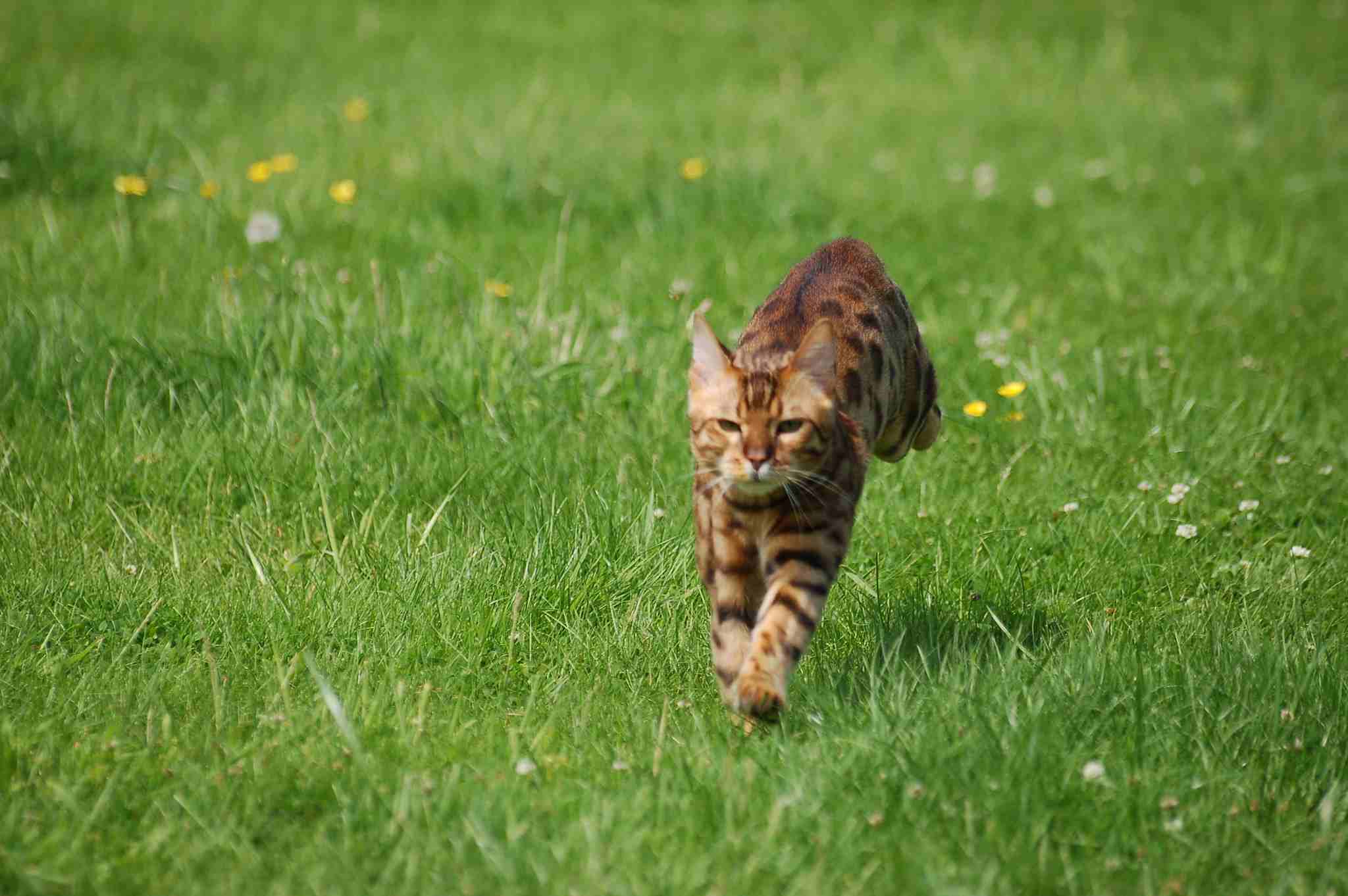
Cat:
Can reach speeds of 30 mph (48 km/h) in short bursts.
Mountain Lion:
Capable of reaching speeds up to 40-50 mph (64-80 km/h) in pursuit of prey.
Comparison: Mountain lions demonstrate superior speed, enabling them to cover larger territories and pursue faster prey.
Ecological Implications: High-speed capabilities enhance the hunting efficiency of mountain lions, allowing them to catch agile prey species, contributing to ecosystem dynamics.
9. Agility:
Cat:
Highly agile with quick reflexes for navigating urban environments.
Mountain Lion:
Agile in diverse terrains, including rocky cliffs and dense vegetation.
Comparison: While domestic cats display agility in urban settings, mountain lions exhibit a broader range of agility adapted to natural environments.
Ecological Implications: Mountain lions’ agility supports their ability to navigate challenging terrains, facilitating efficient hunting and territorial movements.
10. Senses:
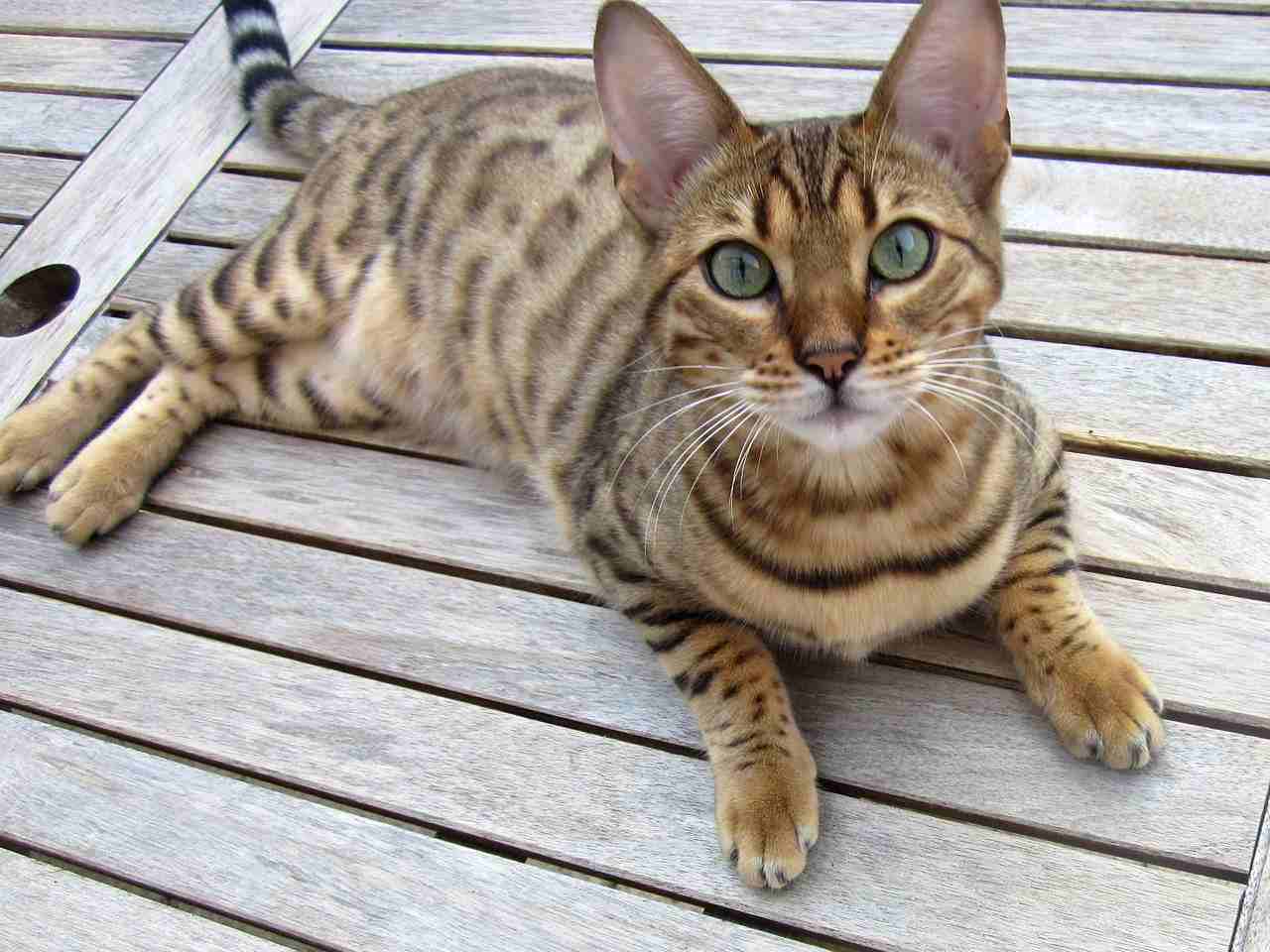
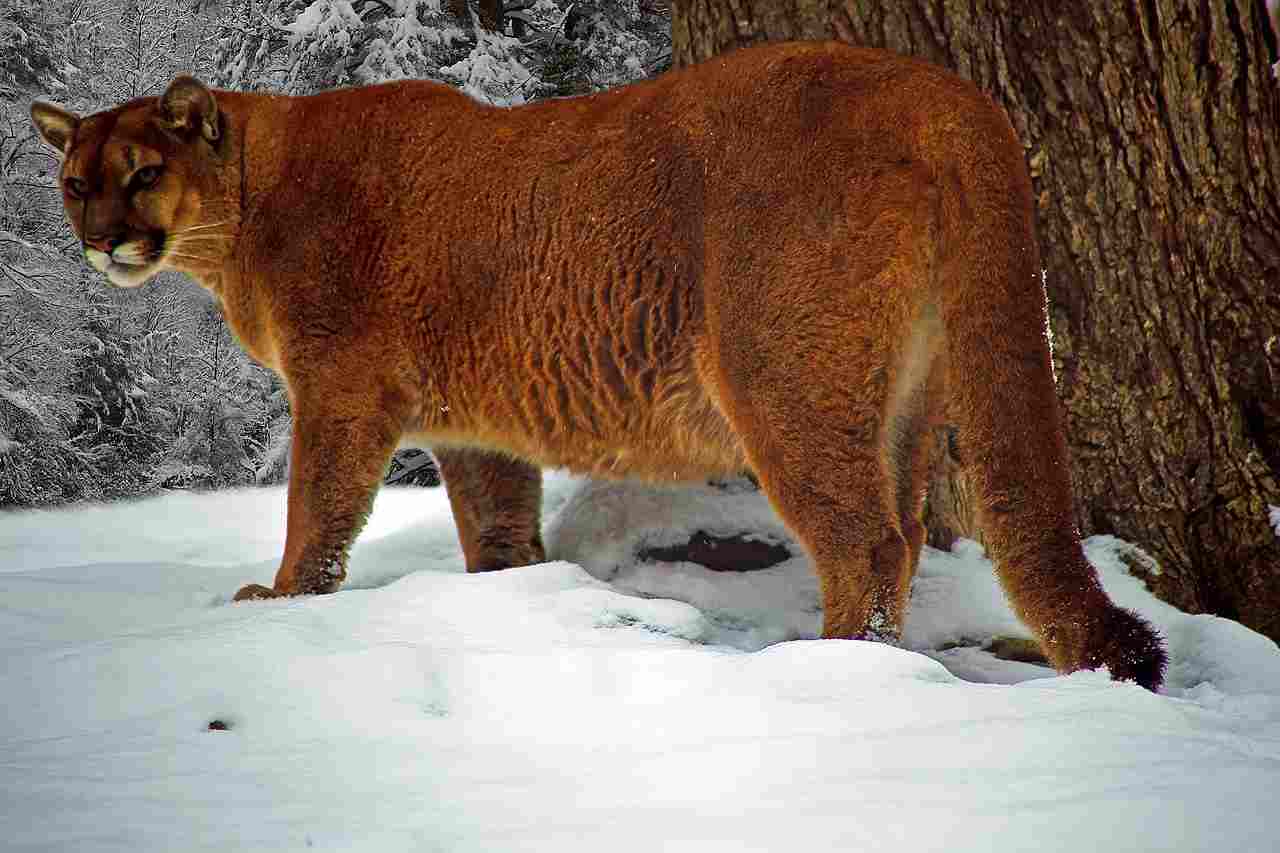
Cat:
Excellent night vision and heightened sense of hearing.
Sensitive whiskers for spatial awareness.
Mountain Lion:
Superior night vision, acute sense of smell, and keen hearing.
Well-developed whiskers for navigating in low-light conditions.
Comparison: Mountain lions possess heightened senses, particularly superior night vision and a highly acute sense of smell, enabling effective hunting in various environments.
Ecological Implications: The advanced sensory capabilities of mountain lions contribute to their role as efficient predators, aiding in the detection and pursuit of prey.
11. Overall Physical Capacity:
Cat:
Adapted for agility, grooming, and domestic living.
Moderate physical capacity suitable for a range of environments.
Mountain Lion:
Built for strength, speed, and hunting prowess.
Robust physical capacity tailored for survival in diverse habitats.
Comparison: Mountain lions exhibit a more specialized and powerful overall physical capacity, emphasizing their role as apex predators in natural ecosystems.
Ecological Implications: The enhanced physical capacity of mountain lions influences their ecological impact as top predators, shaping the dynamics of prey populations.
12. Habitat Preference(s):
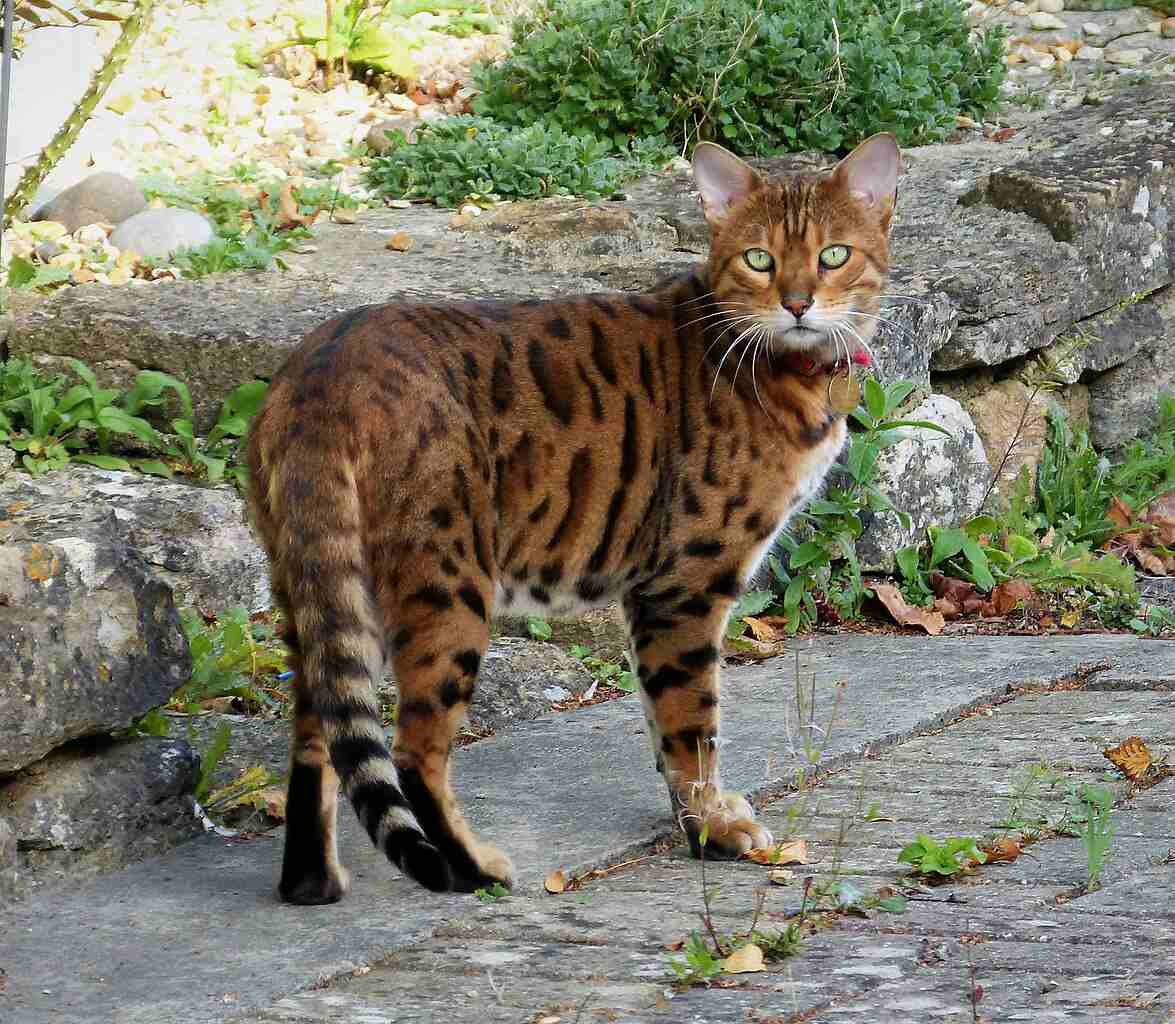
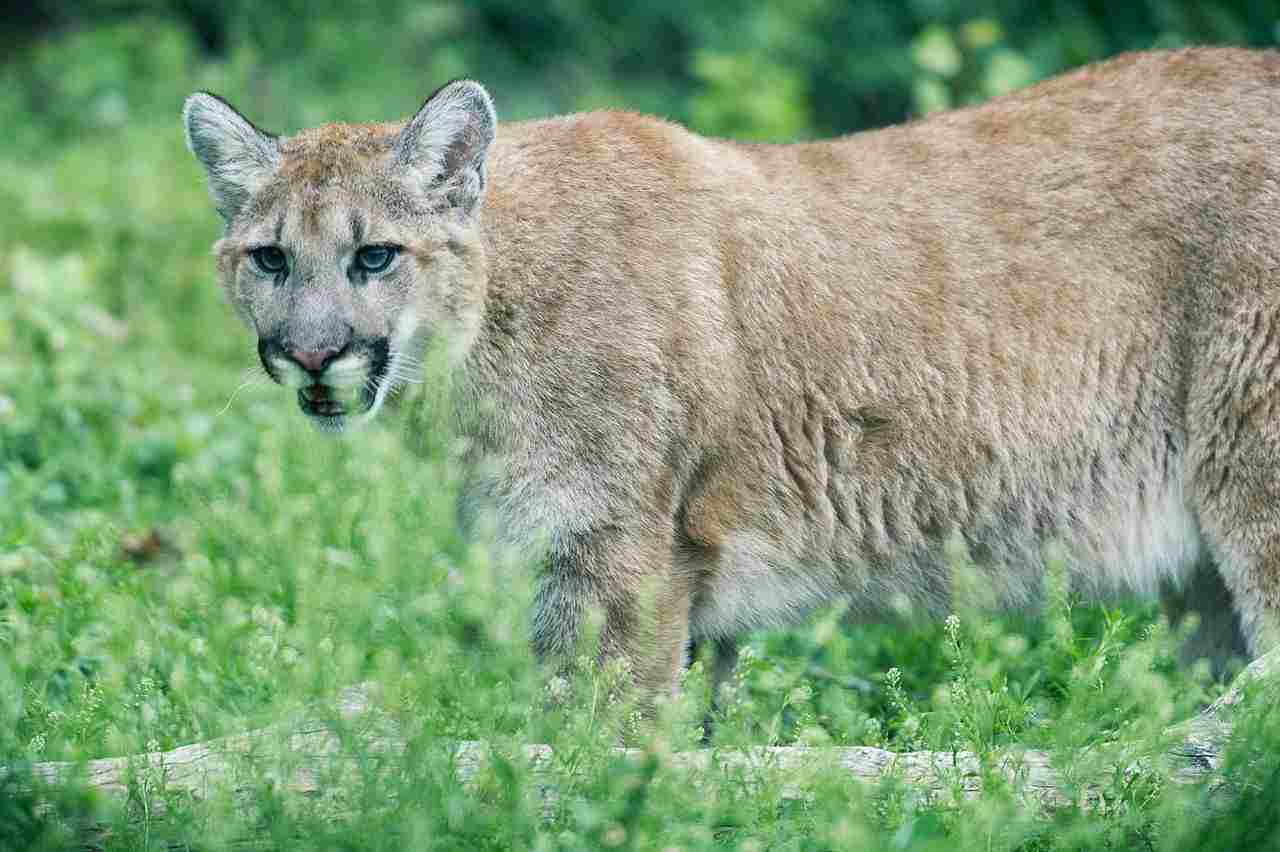
Cat:
Domestic settings, urban areas, and occasionally rural environments.
Mountain Lion:
Varied habitats including forests, mountains, deserts, and grasslands.
Comparison: Domestic cats thrive in human-associated environments, while mountain lions display adaptability to a broader range of natural habitats.
Ecological Implications: Mountain lions’ ability to inhabit diverse ecosystems contributes to their ecological role as apex predators with the capacity to regulate different prey populations.
13. Tracks:
Cat:
Smaller, distinct paw prints with retractable claws visible.
Often show claw marks in tracks.
Mountain Lion:
Larger, more rounded paw prints with retractable claws.
Lack visible claw marks due to retractable claws.
Comparison: Mountain lion tracks are larger and lack visible claw marks, distinguishing them from the smaller and claw-marked tracks of domestic cats.
Ecological Implications: The tracking differences aid in ecological studies and wildlife monitoring, helping identify the presence and behavior of these feline species in different environments.
14. Lifespan:
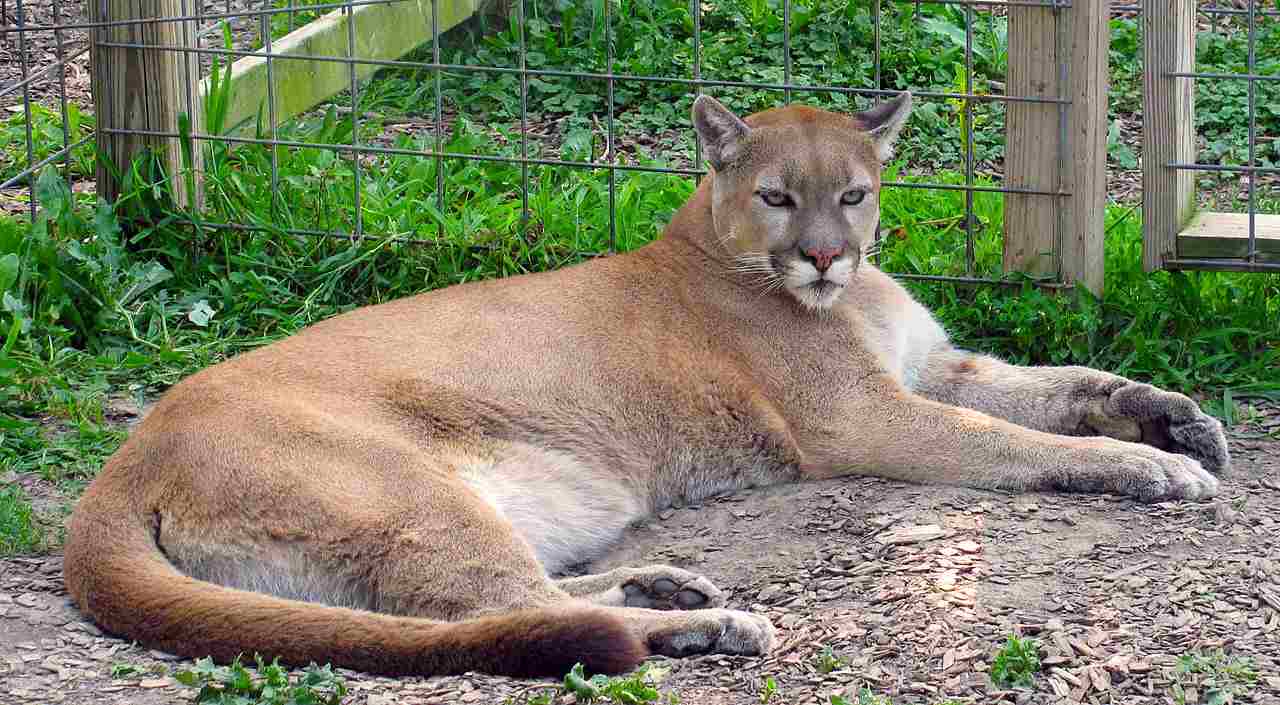
Cat:
Domestic cats typically live 12 to 15 years, with variations based on factors like breed and lifestyle.
Mountain Lion:
Wild mountain lions have an average lifespan of 8 to 13 years, influenced by factors such as habitat and human interactions.
Comparison: Domestic cats generally have longer lifespans compared to wild mountain lions, reflecting differences in their environments and lifestyles.
Ecological Implications: The shorter lifespan of mountain lions can impact their population dynamics and reproductive patterns in the wild.
15. Mode of Feeding:
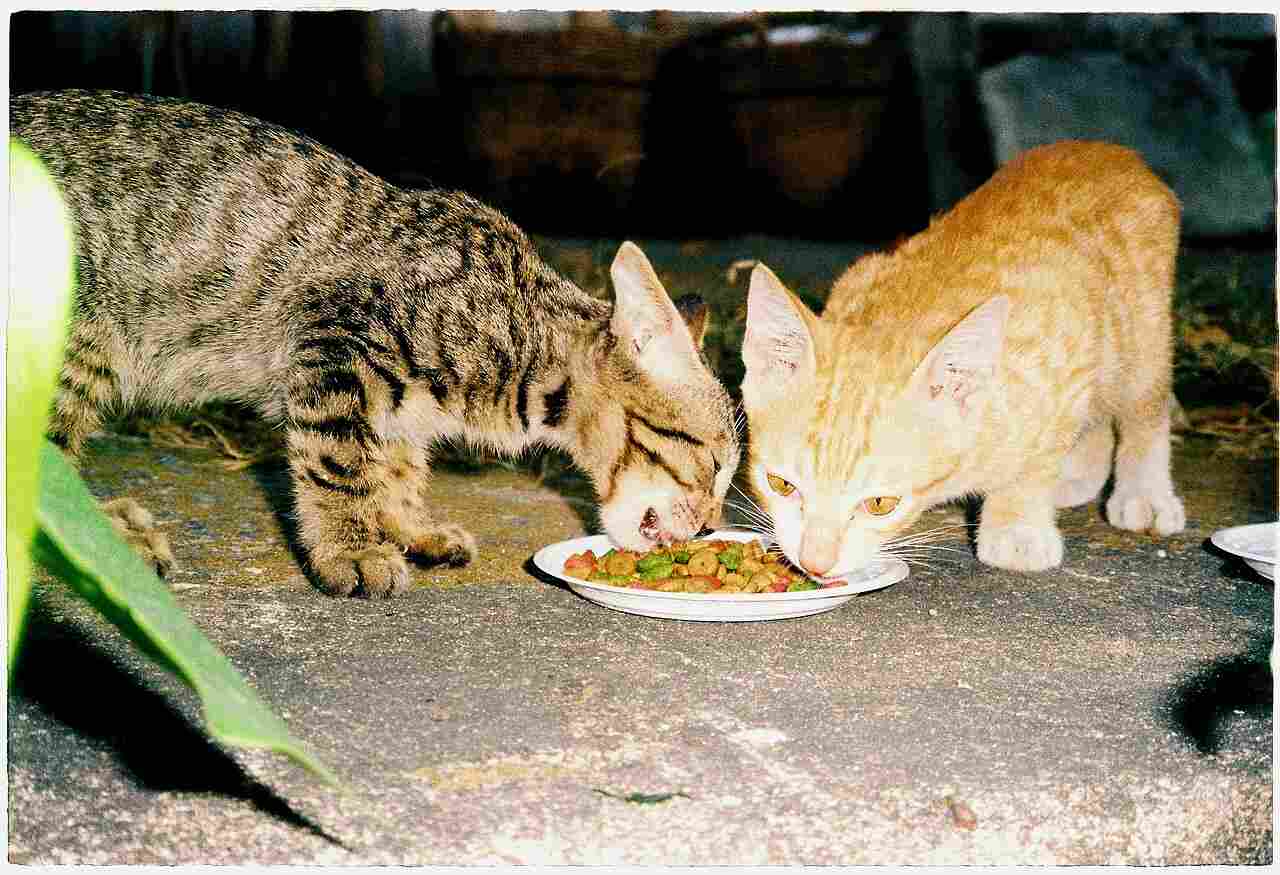
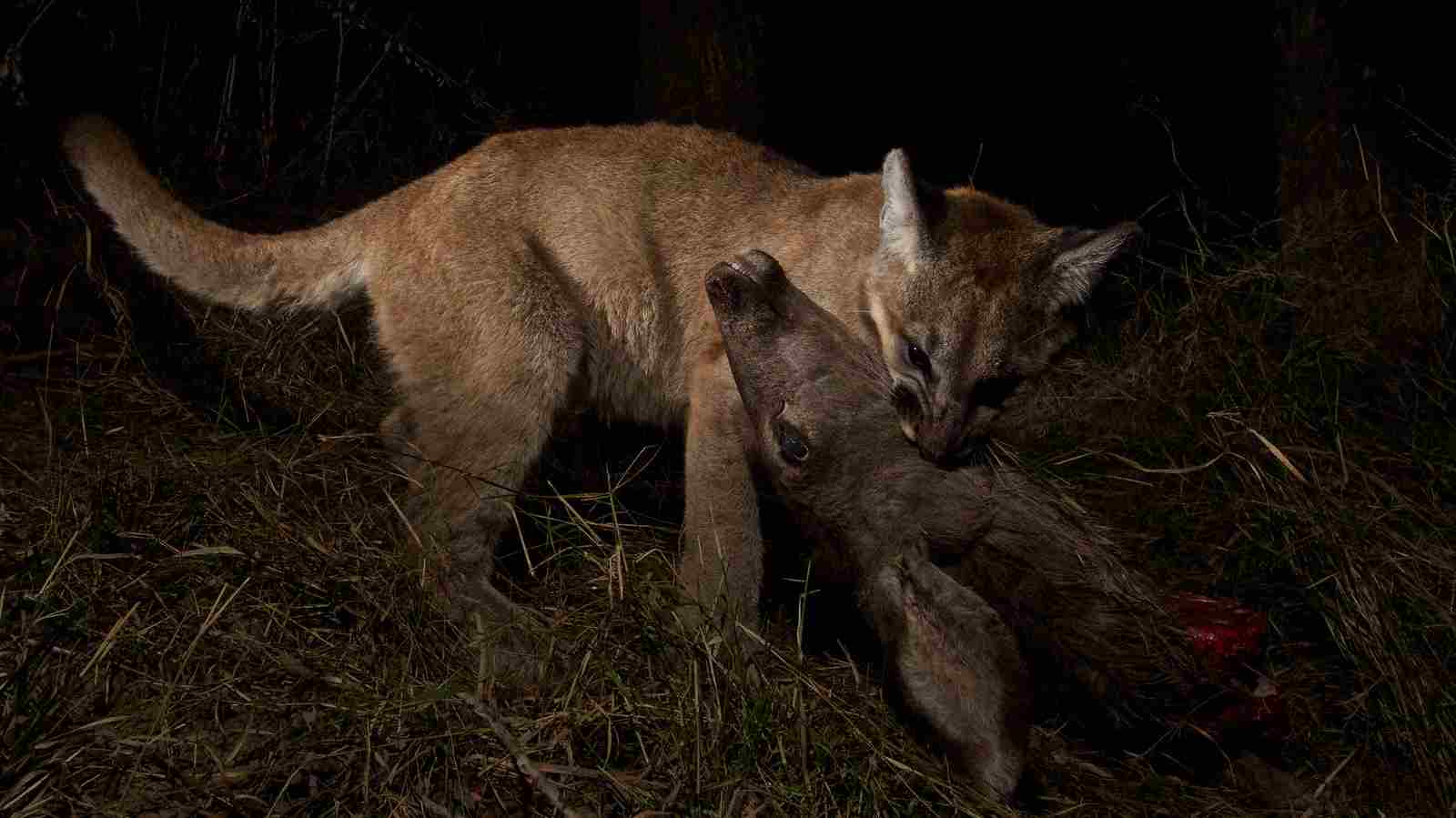
Cat:
Carnivorous diet, often relying on commercial cat food or hunting small prey.
Mountain Lion:
Strictly carnivorous, hunting larger prey like deer, elk, and sometimes livestock.
Comparison: Mountain lions are adapted for hunting larger prey, distinguishing their feeding behavior from domestic cats, which primarily target smaller animals.
Ecological Implications: Mountain lions’ reliance on larger prey can influence herbivore populations and indirectly impact vegetation dynamics in their ecosystems.
16. Intelligence:
Cat:
Domestic cats display problem-solving skills and can learn from their environment.
Mountain Lion:
Exhibits higher intelligence for hunting, navigating varied terrains, and adapting to changing conditions.
Comparison: Mountain lions demonstrate a more advanced level of intelligence, critical for their survival in the wild, compared to the problem-solving abilities of domestic cats.
Ecological Implications: The intelligence of mountain lions contributes to their effectiveness as predators, aiding in successful hunting and adapting to environmental challenges.
17. Social Behavior:
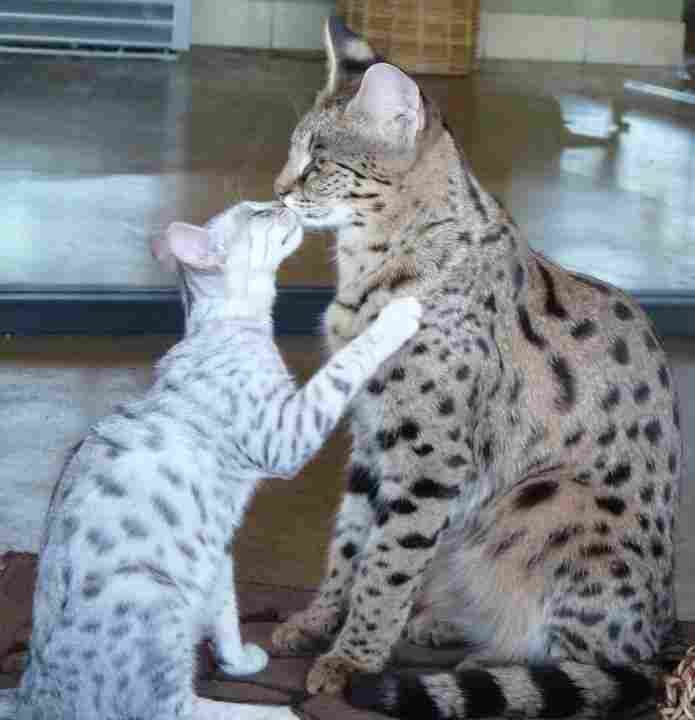
Cat:
Domestic cats display a range of social behaviors, from solitary to forming small groups.
Mountain Lion:
Primarily solitary, except during mating and when raising young.
Comparison: While domestic cats exhibit a spectrum of social behaviors, mountain lions are predominantly solitary animals, emphasizing their independent nature.
Ecological Implications: The solitary nature of mountain lions influences their territorial behaviors and hunting strategies, shaping their role as apex predators in ecosystems.
18. Mode of Reproduction:
Cat:
Domestic cats are polyestrous, capable of reproducing throughout the year.
Gestation period averages around 63 days, and litters can range from 1 to 9 kittens.
Mountain Lion:
Mountain lions are polyestrous as well, but reproduction is often influenced by factors like prey availability.
Gestation period lasts approximately 82 to 96 days, and litters typically consist of 2 to 3 cubs.
Comparison: Both domestic cats and mountain lions are polyestrous, but mountain lions have a longer gestation period and usually smaller litters.
Ecological Implications: Reproductive patterns of mountain lions are influenced by ecological factors, impacting their population dynamics within specific habitats.
19. Parental Behavior:
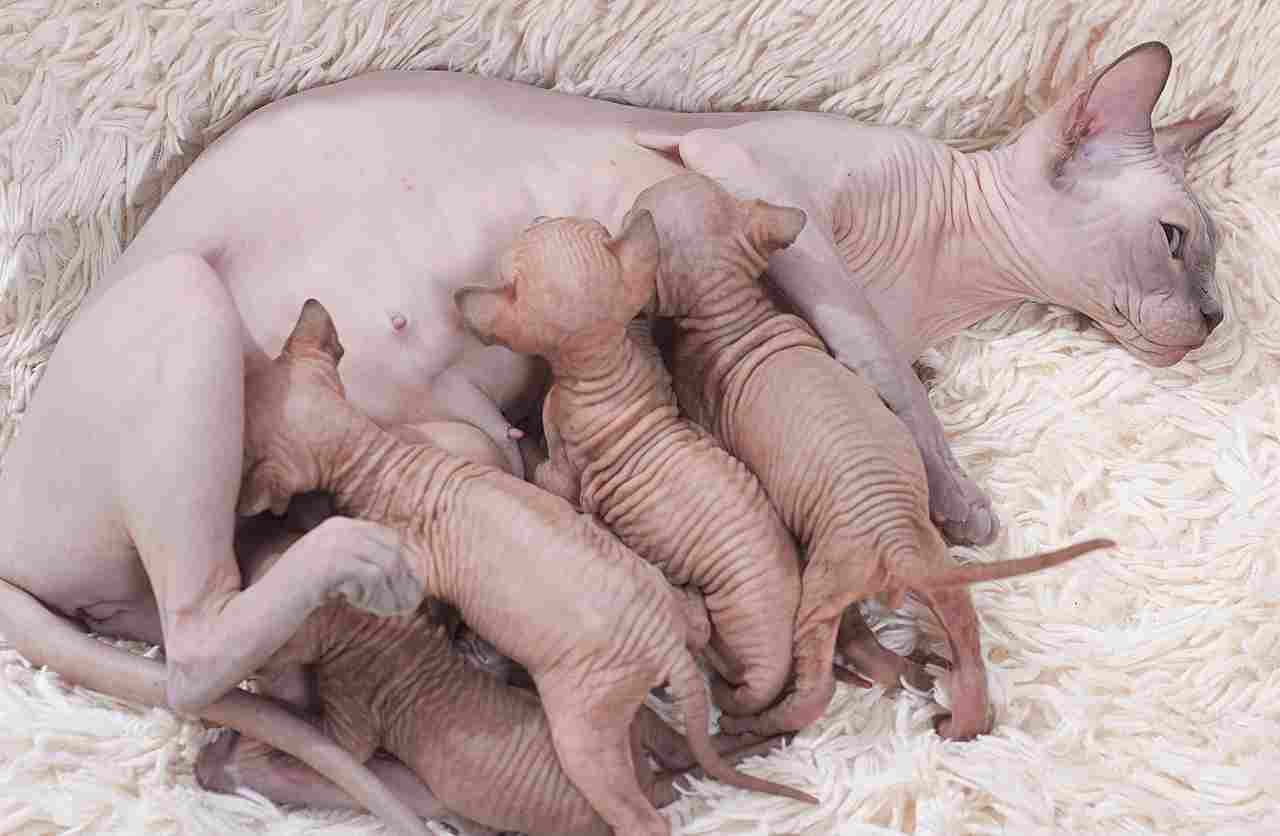
Cat:
Female domestic cats exhibit maternal care, nursing and grooming their kittens.
Male involvement in parenting varies among individuals.
Mountain Lion:
Female mountain lions provide extensive maternal care, raising cubs independently.
Male mountain lions may not actively participate in parental duties.
Comparison: While both species exhibit maternal care, female mountain lions typically raise their cubs independently, emphasizing their solitary nature.
Ecological Implications: Parental behavior contributes to the survival of offspring, impacting the population dynamics and stability of these feline species in their respective environments.
20. Proximity to Human-Inhabited Areas:
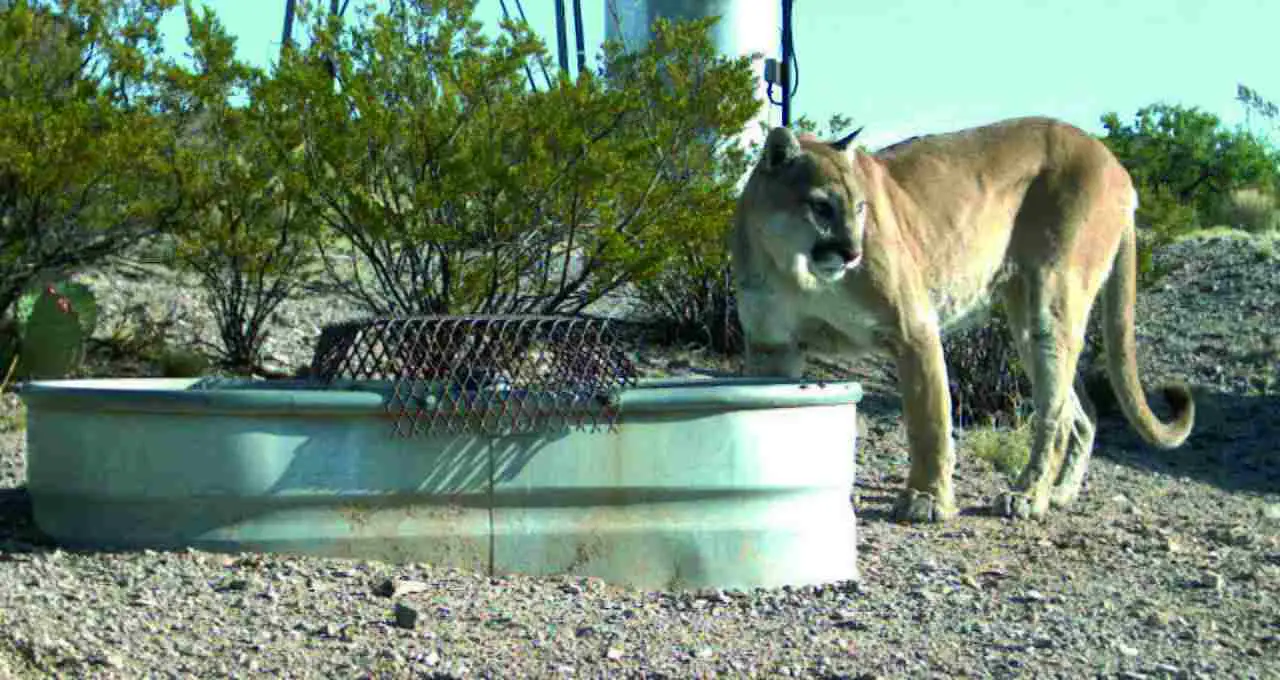
Cat:
Domestic cats are often found in close proximity to human homes and urban areas.
Mountain Lion:
Generally avoids human-populated areas but may encroach upon human territory, especially in regions with expanding urbanization.
Comparison: Domestic cats are more adapted to living in close association with humans, while mountain lions tend to avoid direct contact with populated areas.
Ecological Implications: Human-wildlife conflicts may arise when mountain lions encroach upon urban areas, necessitating conservation measures to ensure coexistence.
21. Behavior Toward Humans:
Cat:
Domestic cats can exhibit a range of behaviors toward humans, from affectionate to aloof.
Mountain Lion:
Typically avoids human interaction; however, encounters may occur, leading to potential conflicts if the mountain lion feels threatened.
Comparison: Domestic cats are more likely to engage with humans, while mountain lions generally prefer to avoid direct contact.
Ecological Implications: Understanding and respecting the natural behavior of mountain lions is crucial for minimizing human-wildlife conflicts and ensuring the conservation of these apex predators.
22. Danger Posed to Humans:
Cat:
Domestic cats pose minimal danger to humans, primarily relying on defensive behaviors such as scratching or biting when threatened.
Mountain Lion:
While mountain lions typically avoid confrontations with humans, attacks can occur, especially if the mountain lion feels cornered or threatened.
Comparison: The danger posed by domestic cats to humans is minimal, whereas mountain lions, though generally elusive, can present a more significant threat due to their size and predatory nature.
Ecological Implications: Human encounters with mountain lions highlight the importance of understanding and respecting their behavior, emphasizing the need for conservation strategies to minimize conflicts.
23. Associated Precautions:
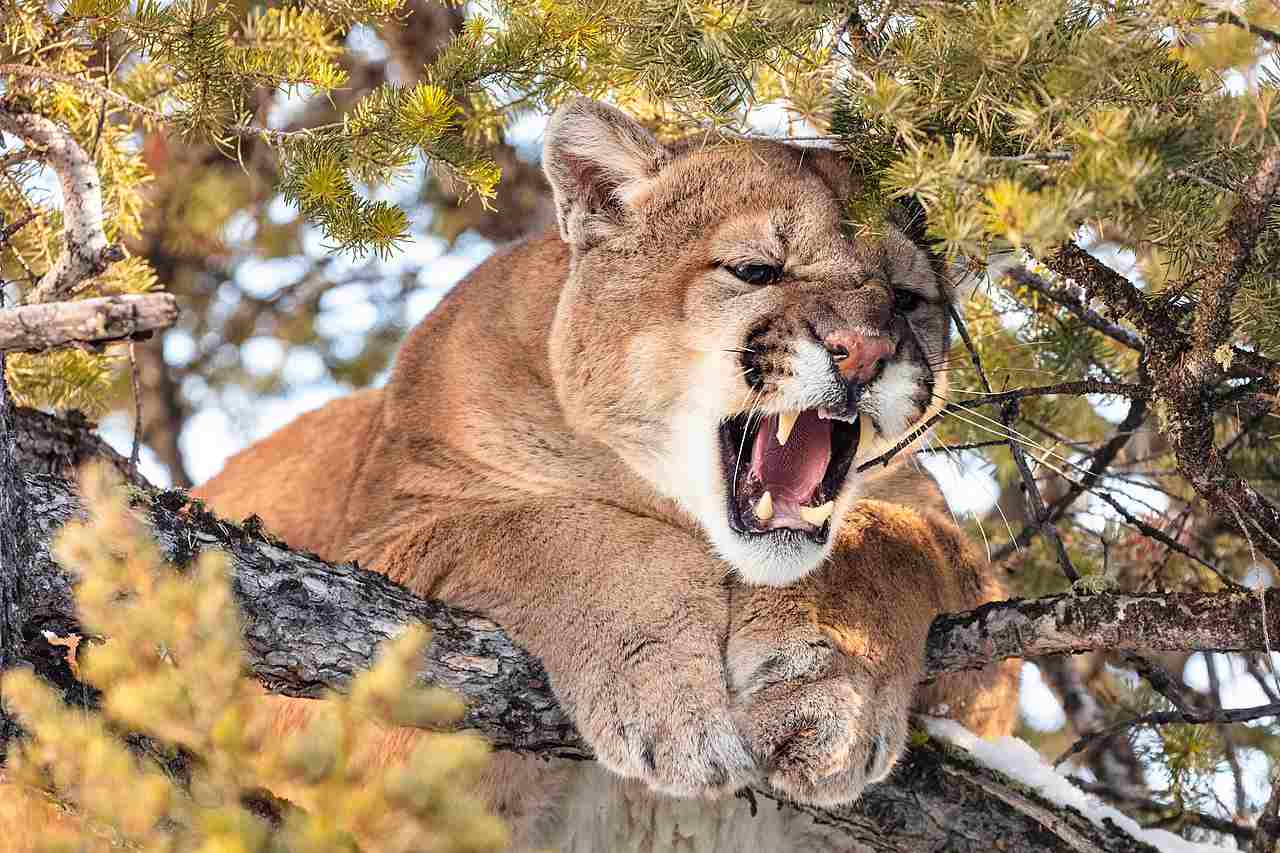
Cat:
Basic precautions include providing a safe and enriching environment for domestic cats, vaccinations, and spaying/neutering.
Mountain Lion:
Precautions involve awareness in mountain lion habitats, avoiding confrontation, and implementing conservation measures to protect both humans and the species.
Comparison: Precautions for domestic cats are primarily centered around pet care, while precautions regarding mountain lions focus on coexistence and minimizing potential conflicts.
Ecological Implications: Implementing precautions for mountain lions contributes to the conservation of these species and fosters harmonious relationships between humans and wildlife.
24. Conservation Status:
Cat:
Domestic cats are not subject to conservation efforts as they are widely distributed and exist in abundance.
Mountain Lion:
Conservation status varies regionally; some populations are of least concern, while others face threats, leading to localized conservation efforts.
Comparison: Domestic cats are not conservation-dependent, whereas mountain lions may require conservation interventions in specific areas to maintain their populations.
Ecological Implications: Conservation efforts for mountain lions aim to preserve biodiversity and maintain the ecological balance within their habitats.
Summary of Comparison
Taxonomy:
Domestic cat: Felis catus (Felidae, Felis)
Mountain lion: Puma concolor (Felidae, Puma)
Appearance:
Domestic cats: Diverse coat colors, variable size.
Mountain lions: Tawny coat, larger, more robust build.
Size:
Domestic cats: Up to 20 pounds.
Mountain lions: 80 to 220 pounds.
Weight:
Domestic cats: 5 to 20 pounds.
Mountain lions: 80 to 220 pounds.
Bite Force (PSI):
Domestic cats: 200 to 300 PSI.
Mountain lions: 350 to 700 PSI.
Physical Offensive Advantages:
Domestic cats: Sharp claws, quick reflexes.
Mountain lions: Powerful jaw, sharp claws, enhanced strength.
Physical Defensive Advantages:
Domestic cats: Agility, climbing abilities.
Mountain lions: Strong hind legs, solitary behavior.
Speed:
Domestic cats: Up to 30 mph.
Mountain lions: 40-50 mph.
Agility:
Domestic cats: Agile with quick reflexes.
Mountain lions: Agile in diverse terrains.
Senses:
Domestic cats: Excellent night vision, heightened hearing.
Mountain lions: Superior night vision, acute sense of smell.
Overall Physical Capacity:
Domestic cats: Moderately adaptable.
Mountain lions: Built for strength, speed, hunting.
Habitat Preference(s):
Domestic cats: Urban, rural.
Mountain lions: Varied, including forests and mountains.
Tracks:
Domestic cats: Smaller, retractable claws visible.
Mountain lions: Larger, retractable claws without visible marks.
Lifespan:
Domestic cats: 12 to 15 years.
Mountain lions: 8 to 13 years.
Mode of Feeding:
Domestic cats: Small prey, commercial cat food.
Mountain lions: Larger prey like deer and elk.
Intelligence:
Domestic cats: Problem-solving skills.
Mountain lions: Higher intelligence for hunting.
Social Behavior:
Domestic cats: Varied, can be solitary or form small groups.
Mountain lions: Primarily solitary, except during mating.
Mode of Reproduction:
Domestic cats: Polyestrous, gestation around 63 days, 1-9 kittens.
Mountain lions: Polyestrous, gestation 82-96 days, 2-3 cubs.
Parental Behavior:
Domestic cats: Maternal care, varying male involvement.
Mountain lions: Extensive maternal care, female raises cubs independently.
Proximity to Human-Inhabited Areas:
Domestic cats: Close proximity to humans.
Mountain lions: Generally avoids, but may encroach upon human territories.
Behavior Toward Humans:
Domestic cats: Varied, can be affectionate or aloof.
Mountain lions: Typically avoids direct contact with humans.
Danger Posed to Humans:
Domestic cats: Minimal danger, defensive behaviors.
Mountain lions: Potential danger, especially if threatened.
Associated Precautions:
Domestic cats: Basic pet care, vaccinations.
Mountain lions: Awareness, avoiding confrontation, conservation measures.
Conservation Status:
Domestic cats: Not conservation-dependent.
Mountain lions: Varied, localized conservation efforts may be required.
Conclusion:
I). Similarities
Both domestic cats and mountain lions belong to the Felidae family, demonstrating shared evolutionary origins and biological characteristics.
II). Differences
While domestic cats and mountain lions share certain traits, differences in size, behavior, and ecological roles highlight the unique adaptations of each species to their respective environments. Understanding these distinctions is crucial for coexistence and conservation efforts.

